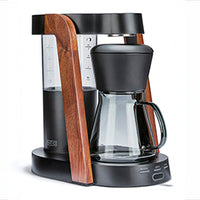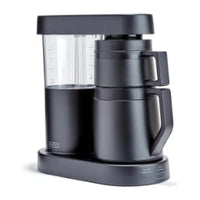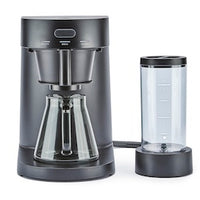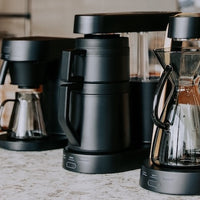Why ‘Flavor Notes’ Don’t Show Up in Your Cup
Key Takeaways
-
Flavor notes on coffee bags refer to potential taste profiles, not guaranteed flavors
-
Missing flavor notes usually point to brewing variables being off — grind, temp, water, or ratio
-
Roast level and bean freshness play a major role in flavor clarity
-
Many subtle notes emerge only when temperature stabilizes during drinking
-
Clean equipment, consistent process, and quality water help unlock listed flavor notes
Ever read a coffee bag promising chocolate, cherry, or jasmine — only to brew a cup that just tastes like… coffee? You’re not alone. The mystery of missing flavor notes frustrates even seasoned home brewers.
But there’s a reason your cup doesn’t match the label. Flavor notes aren’t additives — they’re subtle sensory impressions. And a lot has to go right for them to show up.
Let’s break down what’s behind those elusive notes — and what you can do to bring them forward.
What Flavor Notes Really Are
Flavor notes are tasting descriptors used by roasters and cuppers to communicate the impression of a coffee’s aroma, acidity, body, and finish. They’re not flavors added to the beans, but nuanced qualities drawn out through careful tasting.
Examples:
-
“Red apple” might reflect acidity and crispness
-
“Chocolate” suggests smoothness and sweet roast
-
“Floral” hints at light, aromatic complexity
These descriptors serve as a roadmap, but they depend heavily on brewing and tasting conditions.
The Most Common Reasons You’re Missing Flavor Notes
1. Wrong Brew Temperature
Too hot? You burn off delicate aromatics. Too cool? You under-extract.
Fix: Aim for 195°F to 205°F. Use a kettle with temperature control or let boiled water cool slightly before brewing.
2. Grind Size Off
Grind too fine = over-extracted, bitter notes overpower subtle flavors. Grind too coarse = under-extracted, flat-tasting cup.
Fix: Use a burr grinder. Adjust grind size based on brew method and taste.
3. Poor Water Quality
Tap water with chlorine or mineral imbalance can distort the brew’s clarity.
Fix: Use filtered water with balanced mineral content — not distilled or softened water.
4. Wrong Coffee-to-Water Ratio
Too strong or too diluted, and the balance goes out the window.
Fix: A good starting point is 1:15 to 1:17 (coffee:water by weight). Adjust from there.
5. Low-Quality or Stale Beans
Old beans lose complexity. Generic blends often don’t have distinct notes.
Fix: Buy freshly roasted, single-origin beans from a trusted roaster. Store properly.
The Role of Roast Level
Roast drastically affects what flavors are possible:
-
Light Roast: More acidity, floral and fruit notes
-
Medium Roast: Balanced body with chocolate or nutty flavors
-
Dark Roast: Low acidity, deep roasty flavors, but fewer subtle notes
If you're brewing dark roast and expecting blueberry or hibiscus, you're setting yourself up for disappointment.
Letting the Cup Cool Reveals the Good Stuff
Flavor notes often don’t show up in the first hot sip. As coffee cools (to 130°F–160°F), aromatics stabilize and flavor becomes more pronounced.
Pro tip: Don’t rush the cup. Sip slowly. Swirl a little. Let it evolve.

It’s Not Just You — Tasting Takes Practice
Flavor detection is part technique, part training. Professional tasters use aroma kits, comparison exercises, and years of experience.
To train your palate:
-
Smell the dry grounds, wet bloom, and brewed cup separately
-
Try cupping — the coffee equivalent of a wine tasting
-
Taste coffees side-by-side to spot differences
-
Keep notes on what you smell and taste
It’s a journey — and most people can’t detect all the listed notes on day one.
Equipment and Cleanliness Matter
Leftover oils or residue from your gear will muddy your cup.
Best practices:
-
Clean grinders and brewers weekly
-
Avoid scented soaps or storage containers
-
Rinse thoroughly to prevent buildup
A clean path from bean to cup makes all the difference.
Brewing Gear That Gets Out of the Way
Precision coffee machines from Ratio Coffee are designed to extract clean, balanced flavors by automating temperature, bloom, and timing. When your equipment isn’t introducing inconsistencies, the natural notes of your beans come forward more easily.
If you want flavor clarity, brewing with consistency is just as important as choosing the right beans.
Frequently Asked Questions
Do flavor notes mean the coffee has additives?
No. They’re natural expressions of how the coffee was grown, processed, roasted, and brewed.
Why do I taste bitterness instead of fruit or chocolate?
Likely causes include overly hot water, grind issues, or dirty equipment. Fix those first.
Will I ever taste all the listed notes?
Not always — everyone’s palate is different. You might detect some more than others, and that’s normal.
Is expensive gear required to taste flavor notes?
No — just clean, consistent brewing. Though precision machines like those from Ratio Coffee make it easier to replicate ideal results.
Can I train myself to be better at tasting?
Yes! Start by slowing down and taking mindful sips. Compare different coffees and note what you detect. Over time, you’ll improve.
 Ratio Eight S2
Ratio Eight S2
 Ratio Eight Original
Ratio Eight Original
 Ratio Six
Ratio Six
 Ratio Four
Ratio Four
 Compare Machines
Compare Machines






